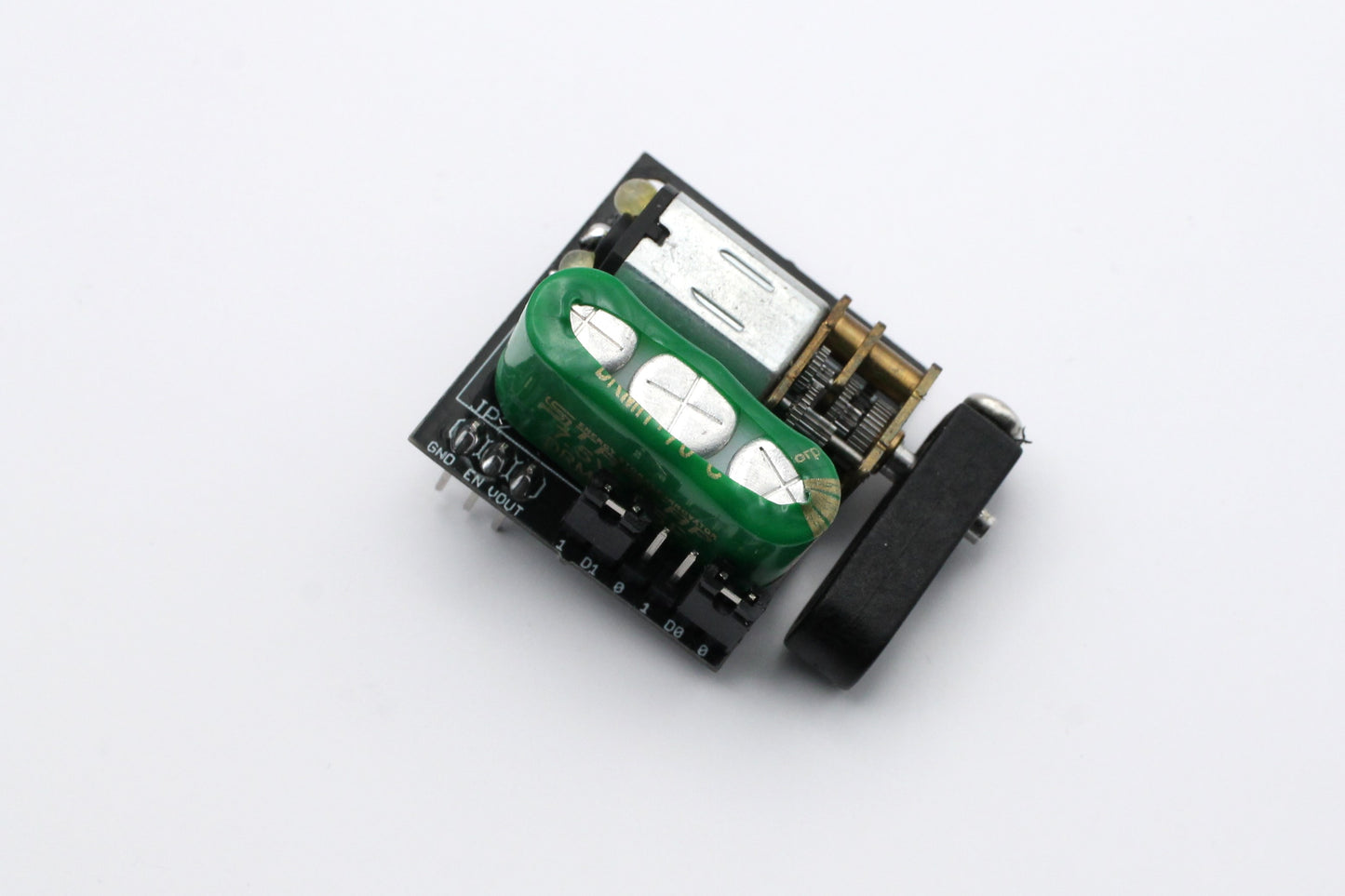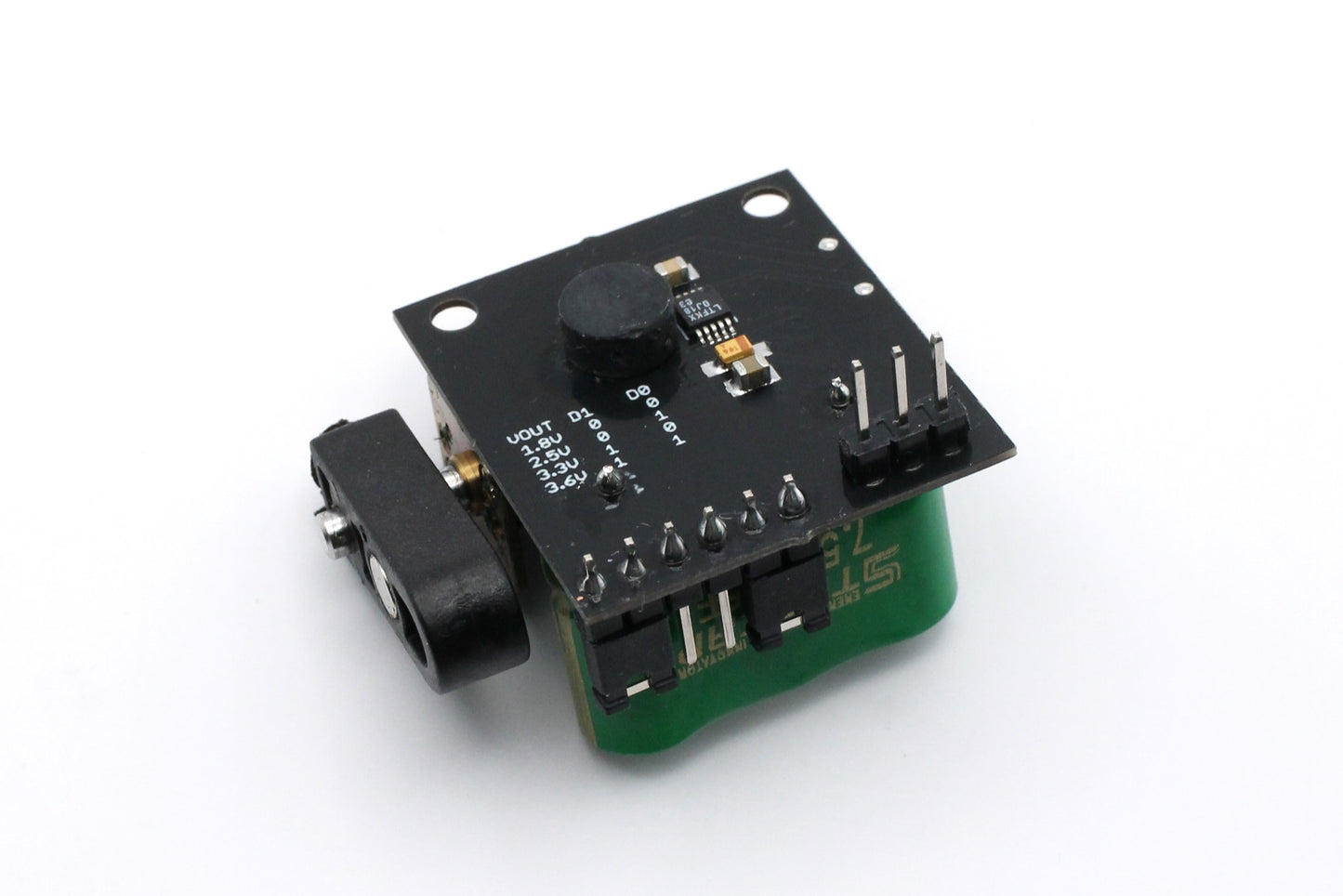Hand-cranked Energy Harvesting Breakout Board
Hand-cranked Energy Harvesting Breakout Board
Couldn't load pickup availability
What is it?
Introducing the revolutionary Hand-Cranked Energy Harvesting Breakout Board - the perfect solution for DIY enthusiasts and makers looking to explore renewable energy sources. This innovative board transforms your muscle energy into electrical energy, making it an ideal educational tool and a sustainable power source for small electronic projects.
Central to its design is a durable, gear-boxed motor linked to a crank handle. Users can turn this handle to produce mechanical energy, which is then transformed into electrical power and stored in an onboard 7.5V 0.5F supercapacitor. The significance of the gear-box lies in its ability to reduce the cranking speed required to generate sufficient energy, making the process more efficient and user-friendly.
The board also features the LTC3588-1 energy management IC, designed to effectively accumulate the necessary energy in the supercapacitor before its release. This aspect is vital in energy harvesting, addressing the issue of inadequate power with each crank turn, which would typically only suffice for simple LEDs. Powering a microcontroller with just one crank would lead to immediate depletion of power before it's fully operational. The LTC3588-1 IC acts like an "energy savings account," gathering power incrementally and then deploying it all at once, ensuring high current capacity as well as consistent power output. This makes it ideal for various electronics, including Arduino boards, LED lights, sensors, and OLED displays. Check out the demo video for a glimpse of the Hand-cranked Energy Harvesting board in action, powering an Arduino Micro Pro that drives a 0.42 inch miniature OLED screen.
NOTE: The board is equipped with two M3 mounting holes for secure installation. It is recommended to firmly mount the board onto a stable surface prior to using the crank handle. This precaution helps to ensure the board remains steady during use and reduces the risk of accidental damage.
Four selectable output voltage levels are available, which can be easily adjusted by configuring jumpers D0 and D1. Here's how you can set the desired output voltage:
- VOUT = 1.8V (D1 = 0, D0 = 0)
- VOUT = 2.5V (D1 = 0, D0 = 1)
- VOUT = 3.3V (D1 = 1, D0 = 0)
- VOUT = 3.6V (D1 = 1, D0 = 1)
When you set the output voltage (VOUT) to 3.3V, it generally takes around 25 to 30 complete rotations of the crank handle to charge the supercapacitor from an empty state to the necessary level for VOUT=3.3V, with the number of rotations varying based on the speed and force of the cranking motion. Adjusting VOUT to a lower value may decrease the number of required cranking revolutions to achieve adequate charge.
The board is simple to use and has only three pins:
- VOUT: Voltage output pin - selectable by jumpers D1 and D0.
- EN: This can be used to wakeup an external microcontroller. When this pin goes HIGH, it means that the supercapacitor is adequately charged to a level in which the voltage output VOUT is ready to be used.
- GND
Potential Use Cases:
Emergency Communication: In emergency situations (such as Zombie Apocalypse) where power might be limited, this setup can be used to send periodic status updates or SOS messages to a remote server.
Educational Tool for Renewable Energy Concepts: Ideal for teaching students about basic electrical concepts, renewable energy, and the conversion of mechanical energy to electrical energy. It can be used in science fairs, classroom demonstrations, or hands-on learning workshops.
Emergency Power Source for Small Electronics: In situations where conventional power sources are unavailable, such as during camping trips or power outages, this board can be used to power small electronic devices like LED lights, thereby providing a reliable and renewable source of energy.
Development and Prototyping Platform: Makers and hobbyists working with Arduino boards or similar microcontrollers can use this board as a power source for prototyping and testing their projects, especially when working in areas without easy access to electricity.





